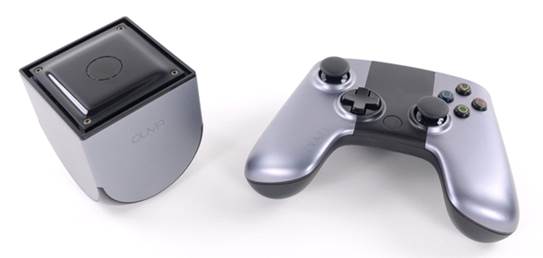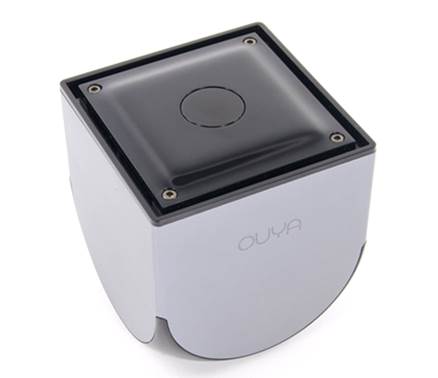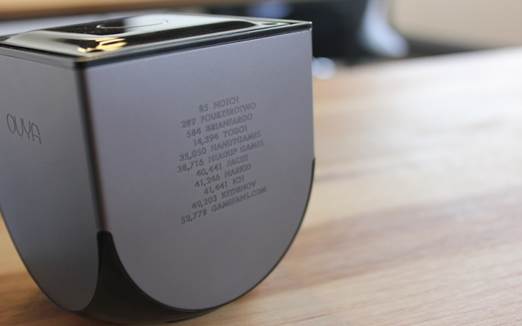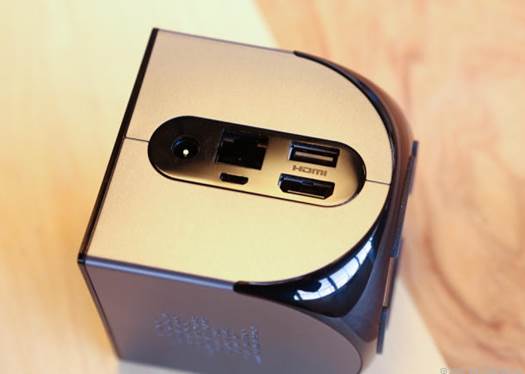So, is the OUYA a revolution in console
gaming? No - not yet. But it is in the early stages. As of this review there
are roughly two months until the system launches at retail - we hope that is
enough time to improve the interface, edit the controller and, just maybe, take
a few new games worthy of real excitement.
Most modern gaming machines are large,
heavy and thirsty for energy. They dominate the entertainment centers into
which they are placed and consume hundreds of watts of electricity when
running. They have evolved this way, growing larger and more powerful to
provide better graphics and more comprehensive gaming experiences. Their
talents are also extended. It's no longer good enough for a gaming console to
simply play games: modern systems have to be complete home entertainment
devices.

OUYA
console
When OUYA was released in May 2012, its low
price of $99 and its processing power is fairly simple as its hypothesis: a
small box designed to become a refuge for those who want to play (or develop)
the original good games. Many gamers like this idea immediately, helping to
drive the system to an $8 million run on Kickstarter. Plenty of others didn't,
saying this would be just a cheap distraction on which to play mediocre Android
games. The truth turns out to be lying somewhere in between.
Console

On
the front of the console you will see the word "OUYA" embossed
The OUYA console is a rather unassuming
little thing, as you might expect given it's basically a smartphone in a box
with no display. It is a small box, about the size of 3 inches on one side,
although it is higher a bit than it is wide. The lower corners have been
rounded off, tapering downward nicely to form a circular bottom with openings
for a cooling fan. (The small vents can also be found in the top as well). It's
a simple, but sophisticated shape that shows Yves Behar didn't just phone it in
when submitting his design.

You'll
find a listing of the top 11 backers on the left side
On the front of the console you will see
the word "OUYA" embossed. Rotate this early Kickstarter edition to
the left and you'll find a listing of the top 11 backers, with Markus
"Notch" Persson of Minecraft is at the top. Continue to rotate
another 90 degrees and you will see the inputs and outputs of the system
arranged vertically at the rear, matching the orientation of the circuit board
within. On top is one input to the AC adapter, below that are the micro-USB and
Ethernet ports; then on the bottom are full-sized HDMI and USB ports. (Yes,
there is one HDMI cable included in the box). In addition, the console supports
Bluetooth 4.0 and 802.11b/g/n.

Continue
to rotate another 90 degrees and you will see the inputs and outputs of the system arranged vertically at the rear
The top of the console is covered in the
same gloss-black plastic as the bottom, slightly raised to present a small,
circular power button, which is a bit hard to see amidst this dark expanse of
polycarbonate (An important change from the original concept). Click it and the
button lights up subtly as the console powers on, the only visual indication
that anything is happening in there.
Inside is an Nvidia Tegra 3 SoC, with
quad-core A9 processor 1.7GHz, 1GB of RAM and 8GB of storage. This puts it on
par with many modern smartphones and tablets, a prognosis that won't inspire
much confidence among those gamers who crave for greatest and latest in
graphics horsepower, but certainly enough to run your typically simple indie
game.
Not surprisingly, this also creates a very
efficient console. While the PS3 has more heat because when launching hundreds
of watts of energy consumed during games, we measured OUYA only consumes about
4.5 watts during play, and even lower when running idle with 1 menu. When
hanged, the console uses only 1 watt, which is the price you will have to pay
for being able to instantly resume your game right where you left off.